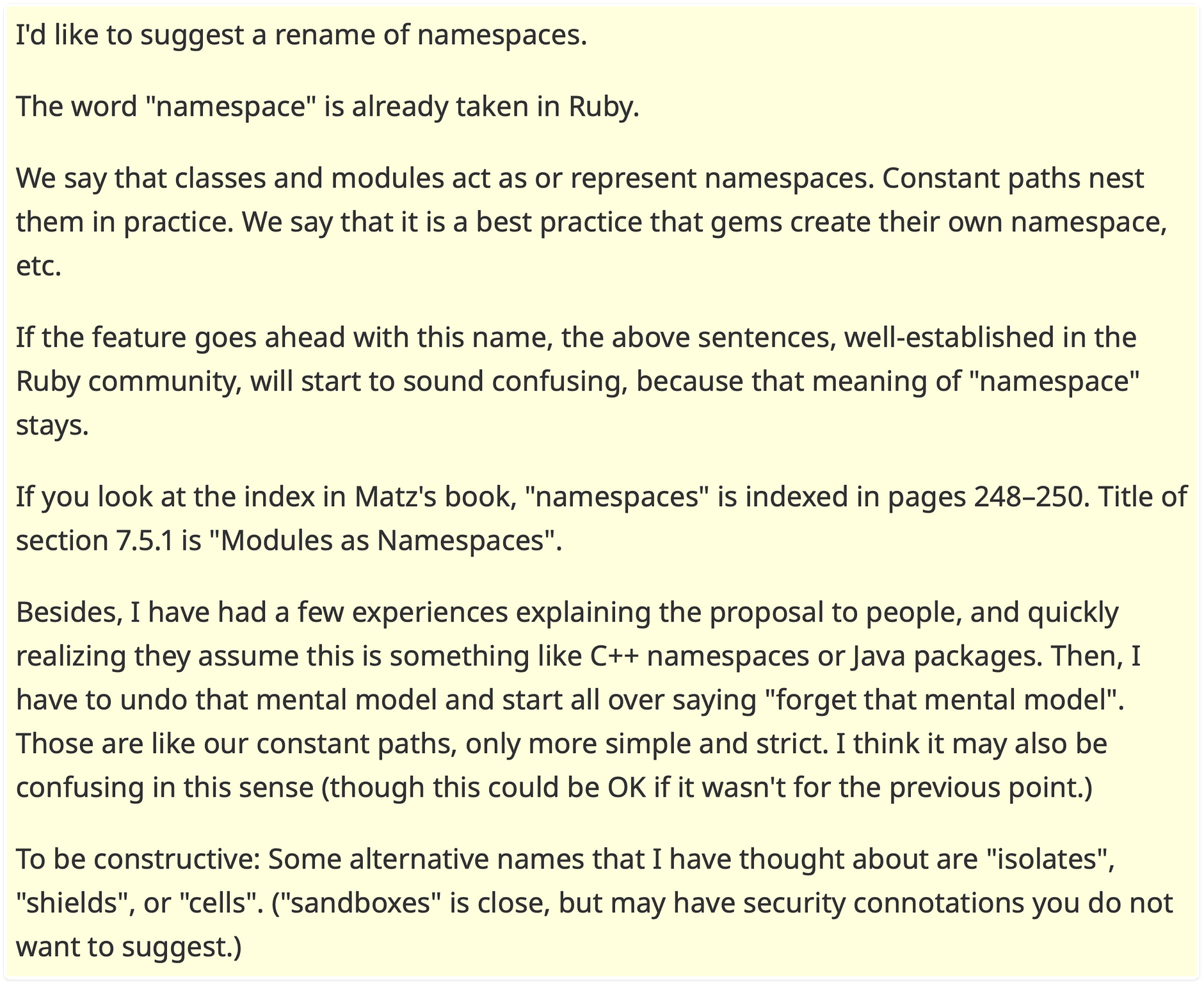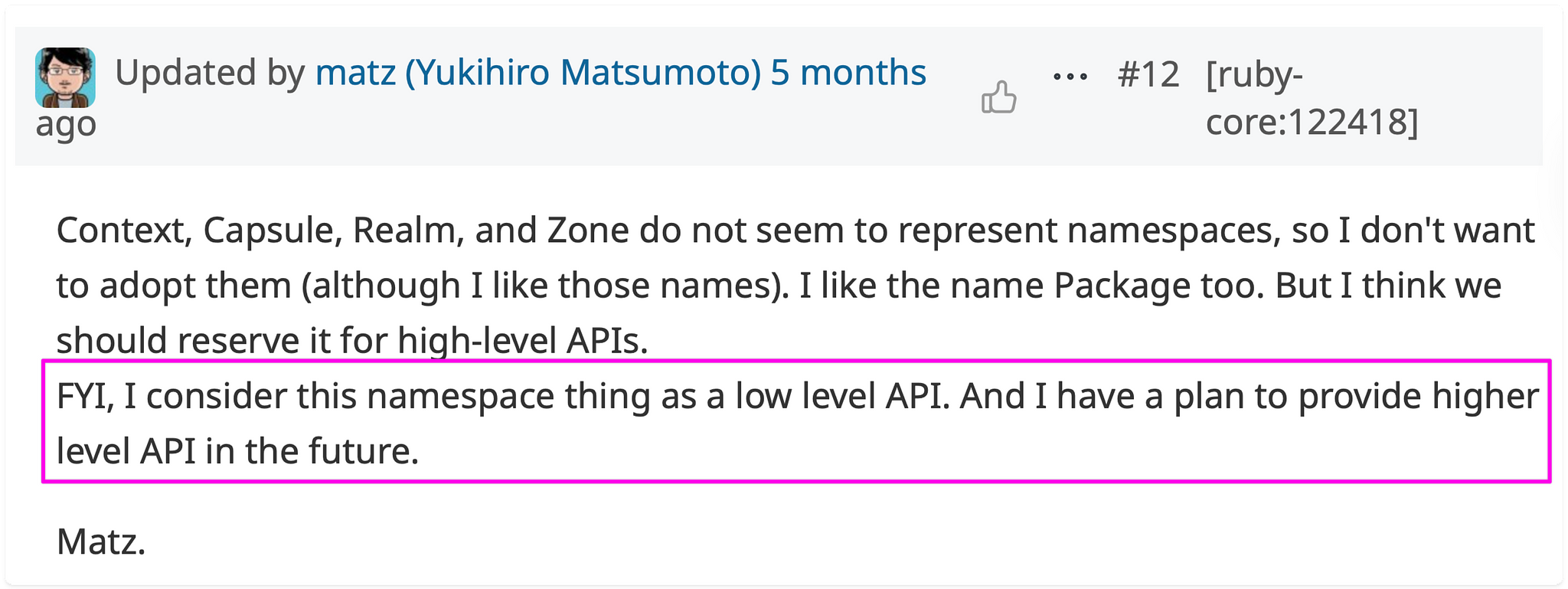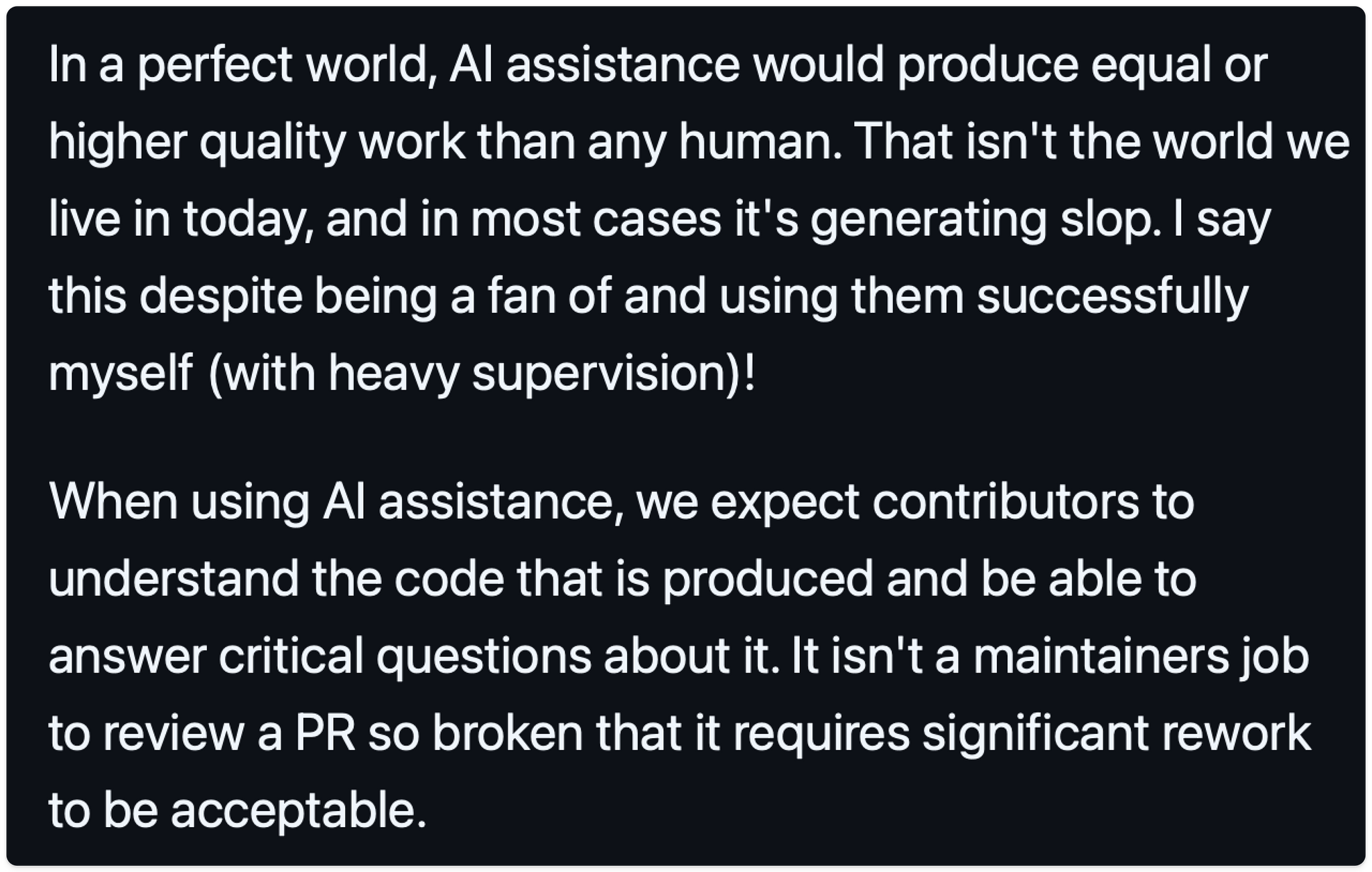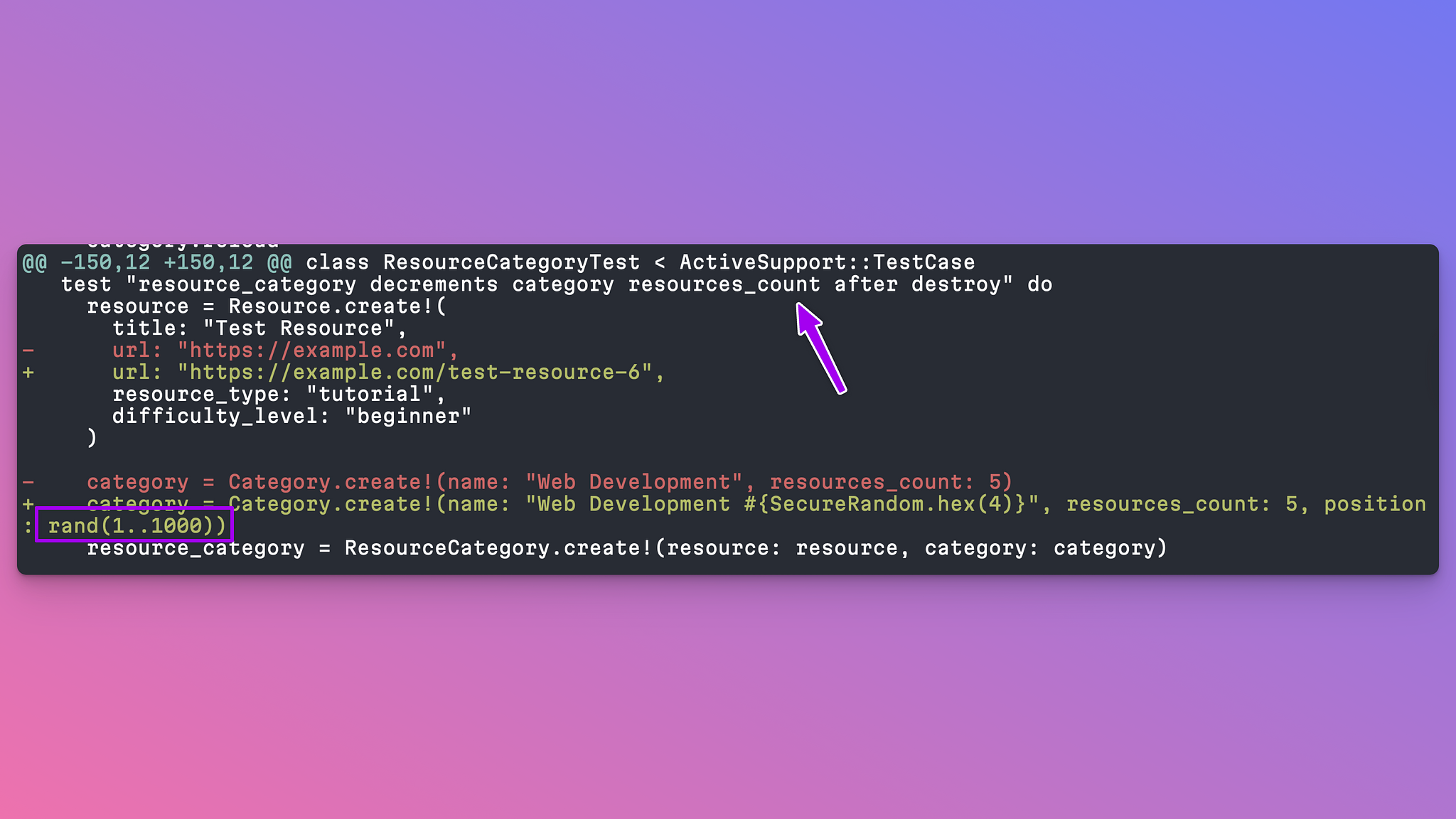Ruby Namespace will be renamed to Ruby::Box
The Ruby namespace will be renamed to Ruby::Box.
A merge request regarding this was integrated into Ruby's master branch a couple of days ago by Satoshi Tagomori.

The renaming discussion was initiated by Xavier Noria, who shared compelling reasons for reconsidering the name.S

The accepted proposal, suggested by Satoshi Tagomori, was approved by Yukihiro Matsumoto:

But what is interesting is also that Matz hinted that this should be seen as a low-level API, with potential plans for a higher-level API in the future. This development is exciting as it could unlock new possibilities:

You can find all these and a lot more inside the Short Ruby Newsletter























